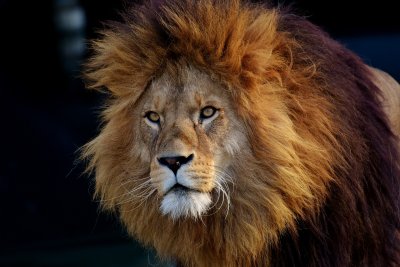News
Latest Lion Aid News
A message from LionAid on World Lion Day
Monday 10th August 2020
|
Year after year, World Lion Day seems more like a wake than a celebration of an iconic species thriving in India and Africa. Last week, LionAid set out to do a complete recount of lions across Africa – our last scientific analysis was in 2012. The information would have come from trusted researchers and wildlife authorities in the few remaining African lion range states. It will take weeks to complete this, but so far the picture does not look good. Perhaps fortunately for this quest, Kenya recently published their latest lion numbers. The government came up with a total more than 2,400 – rated a success as the last number from 8 years ago hovered somewhere around 1,700. We congratulate Kenya for publishing this information, but the same information revealed some very big problems. Only one single local lion population in Kenya allegedly exceeded more than 500 individuals of all ages. The total number of 2,489 lions was derived by addition of 901 lions supposedly living across 317,705 km2. You can see where we are going here. Bean counting of lions does not contribute to the conservation of the species. It is only large, long-term viable populations that will do so. How large does such a population need to be? Estimates vary of course, but an accepted minimum is about 500 adult individuals. Oops. There goes most of Africa, Kenya included. The 526 lions living in the largest population still surviving in Kenya – the Masai Mara – could be only 30% adult potentially reproducing lions. So where do the long-term viable populations still exist? 1. Serengeti ecosystem. And we have no idea how many lions are still there as they have not been adequately counted. Claims of 2,000 lions, but this could be very “enthusiastic”. Trophy hunting, lion/human conflict and bushmeat poaching over many years have surely had a negative impact on this population. We would estimate 1,500 lions. 2. Ruaha/Rufiji in Tanzania. Claims of a “big” lion population there but there have been no independent scientific counts. Human/lion conflict and trophy hunting have led to declines, as have high levels of bushmeat poaching reducing natural prey of lion populations. There is an unknown but large population of lions there, certainly over 500 adults. 3. The Selous. Latest counts by a trophy hunting-associated group came up with about 1,600 lions over this vast area of Tanzania. These results were based on counts of tracks on roads, long discounted as a scientifically verifiable means of counting lions. The Selous has long been 80% dedicated to trophy hunting concessions. 4. The Okavango/Chobe in Botswana. There could be about 1,500 lions in the area, but independently conducted verifiable counts have not been undertaken since about 2001. 5. Greater Kruger. There have been no recent independently verifiable counts of lions in Kruger for very many years. A proper count is well overdue. Official numbers say about 1,600 lions, but this is no longer believable. And that is your lot. Only five long-term viable populations of eastern African lions, with perhaps 6,800 lions (not all adults) among them. The rest of Africa’s lions live in small, scattered, nonviable populations. In Zimbabwe, Zambia, Namibia, Mozambique, Tanzania at least still trophy hunted – a source of lion mortality that should long ago have been eradicated. So, it is not really constructive or conducive to lion conservation to do some bean counting of sixteen lions here and 32 lions there to come up with an African continental total of whatever. What is needed is to ensure the large remaining populations stay well protected and smaller populations are given the opportunity to grow. It has come to the point in African lion conservation that we have gone so far backwards that we must now look to lifeboats for the few remaining, still viable populations. And that would be our message for World Lion Day. Even though Africa’s lions are backed into five corners they can still come out roaring given our dedication and determination. It is a shame lions have had to decline so far to come to urgent attention, but this World Lion Day should be a real wake-up call rather than another in a long series of wakes. Tags: lions, World Lion Day, Categories: canned hunting/Captive breeding, Trophy Hunting, Domesticating Animals, Economics of Wildlife |
Posted by Chris Macsween at 13:09
No comments have been posted yet.
Add a new comment
Existing user
New user sign up




